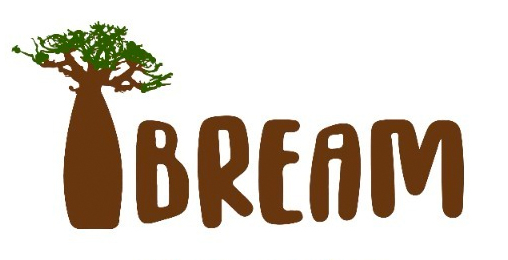Last summer (2023) I was in the rainforest with our tracker dog, Boyd, and dog trainer Wesley, searching for the pygmy hippopotamus. I became part of the IBREAM team to do research for my masters project and now look back at a period realizing how incredibly special this research in Ivory Coast is.
Our adventure actually began even a year before we went to Ivory Coast by selecting the right detection dog with the right skill set for such mission. Boyd, the selected dog for the 2023 mission, had to be trained to search for the pygmy hippopotamus, which we did using pygmy hippo scat, pygmy hippo body odour, and water in which the pygmy hippos lay. All of this was collected from zoos in the Netherlands (ZooParc Overloon, Rotterdam Zoo, Gaiazoo) in order to train Boyd on land but also on water from a boat since in Ivory Coast we would be searching on the rivers in the rainforest. After months of training, we were finally ready to go to Ivory Coast and flew from Brussels to the capital of Ivory Coast, Abidjan, on June 20, 2023. In Abidjan, we were warmly welcomed by the Ivorian IBREAM team members and went straight to the Centre Suisse de Recherches Scientifiques (CSRS), a research centre in Abidjan and our accommodation for two days.
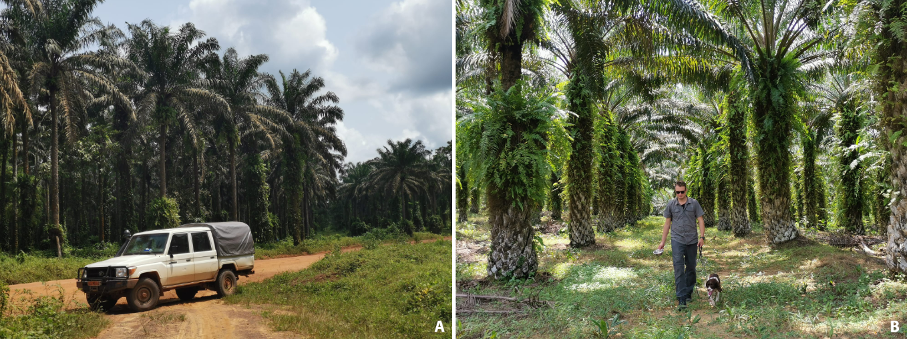
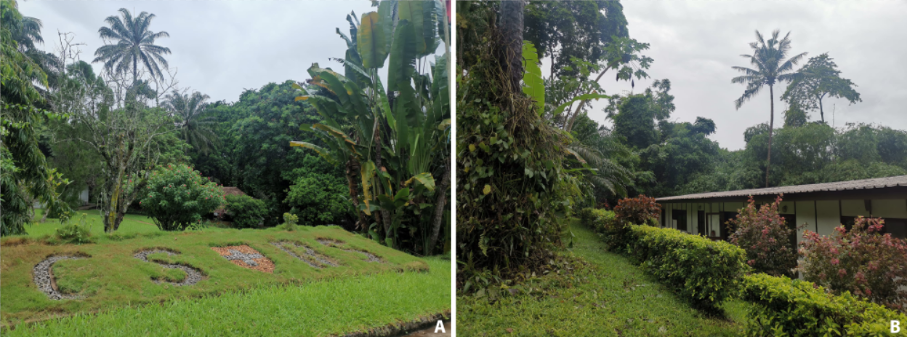
At CSRS we, but also very importantly, Boyd, could immediately acclimatize and get our first impressions of Ivory Coast. A country with beautiful nature and warm people. At the research centre, we made our final preparations before embarking on our two-day car journey to the rainforest, Taï National Park. During our trip, we encountered many small villages, allowing us to get acquainted with life in Ivory Coast. Here and there, we stopped to let Boyd out, who was sitting in a special transport box for dogs in the back of the car. Boyd did great during the trip. I am also specialised in animal health and as such could assist in keeping a close eye on his welfare. Our overnight stay during the car journey was spent in San-Pédro in a hotel by the coast where we could recharge for the next day when we would finally arrive at Taï National Park, the habitat of the pygmy hippo. However, getting there did not go entirely smoothly at the end of this long journey… we got stuck with the car five minutes before reaching our destination. We were not able to drive up a hill because it had rained, making the ground too muddy. Boyd, Wesley, and I got out of the car while the driver tried to get up the hill. There we were, in the dark and the rain, already in the rainforest! Fortunately, the rescue team arrived soon. With a lot of manpower, we managed to get the car up the hill. At the destination, we had to navigate through beautiful narrow paths across the rainforest and eventually arrived at our accommodation for the next 15 days: a wonderful small paradise in Taï National Park!
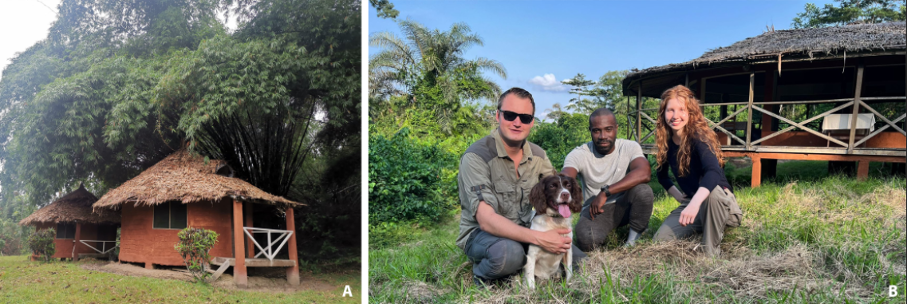
During our first two days in Taï National Park, we got the first impressions of the rainforest and our accommodation. Several small red/orange huts were scattered around the area where we would stay. A larger communal building stood in the middle where we could gather and eat with a view of the rainforest. Here, various monkeys swung around in the trees, and birds flew back and forth (you could hear the hornbills every morning flapping its wings to fly around, beautiful!). But of course, we wanted to start our research in the rainforest as soon as possible. Local assistants had, with a stroke of luck, managed to collect some wild pygmy hippo scat. We used this to test whether Boyd would react to it, and he did immediately! Boyd quickly located the wild pygmy hippo scat in Taï National Park. After that, the boat we would use during the research was transformed to make it usable and safe for Boyd. We set out on the river fairly quickly and our ‘real’ research began.
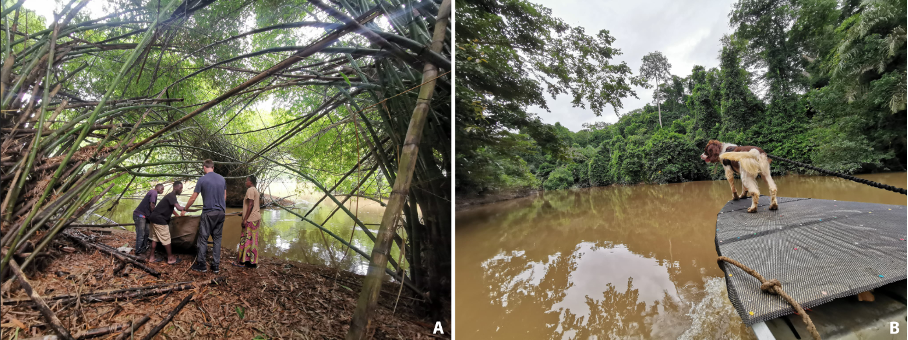
Through the towering trees, which were unimaginably high, we headed out onto the river to finally start searching for the pygmy hippo. Wesley kept an eye on Boyd, who was at the front of the boat. I assisted and gathered information for my research: noting locations where Boyd indicated the scent of pygmy hippos, collecting pygmy hippo scat, taking photos of pygmy hippo footprints, and installing wildlife cameras.
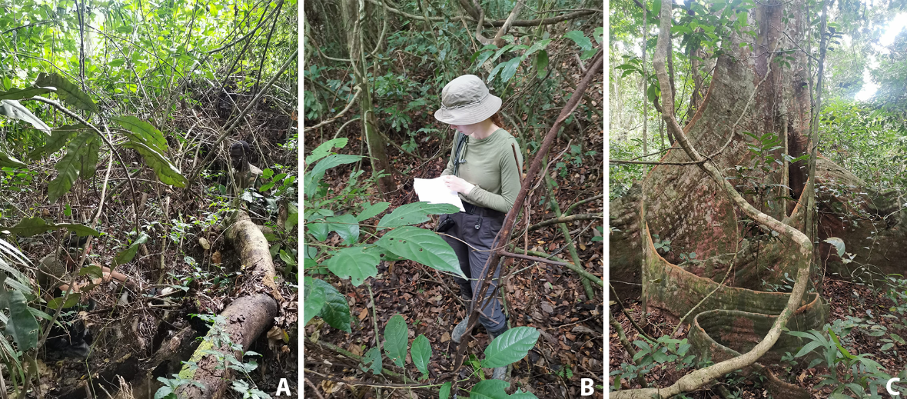
Evidence of the presence of the pygmy hippo was already clear because Boyd could point us to pygmy hippo scat and footprints. However, the living animal was still elusive. From the boat, we often went ashore to continue searching with Boyd on land. Through the dense rainforest, we then ran after Boyd, a real challenge! Branches and leaves had to be hacked away to move through the forest and eventually reach our pygmy hippo tracks. And this was certainly not without worries: during one trek through the rainforest, we were attacked by ants that suddenly were everywhere in our clothing, under our shirts and in our pants. After frantically brushing off all the ants, we fortunately came out alright, and so did Boyd! Also, during one of our boat trips, a tree had fallen across the river, so we could not go on the river for two days and had to wait for the tree to be sawn through. One day, the boat’s engine even failed, so we had to paddle back. But all of this mainly added to the unique experience we were so fortunate to have. Nothing goes as planned, but everyone is always ready to help and find a solution!
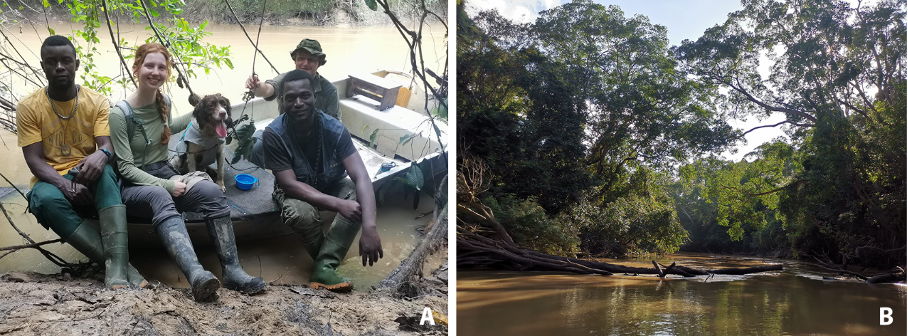
It was truly a celebration and a wonderful reward for all the hard work when we finally saw a pygmy hippo on our cameras! On June 24, 2023, we placed one of our first cameras, and eventually, on the 27th, a pygmy hippo passed by, just three days later! We already knew we were close to the pygmy hippo thanks to the scat and footprints found by Boyd, but to subsequently have this confirmed and see this animal on camera is truly very special. We were right in the same spot as a pygmy hippo! And so, we were able to see pygmy hippos on five other cameras, even one in daylight. This is quite special because they are primarily active at night. In a relatively short period of fifteen days in Taï National Park, with Boyd’s help, we found pygmy hippo dung six times, pygmy hippo footprints sixteen times, and six video recordings of pygmy hippos. Truly unique within our short timeframe!

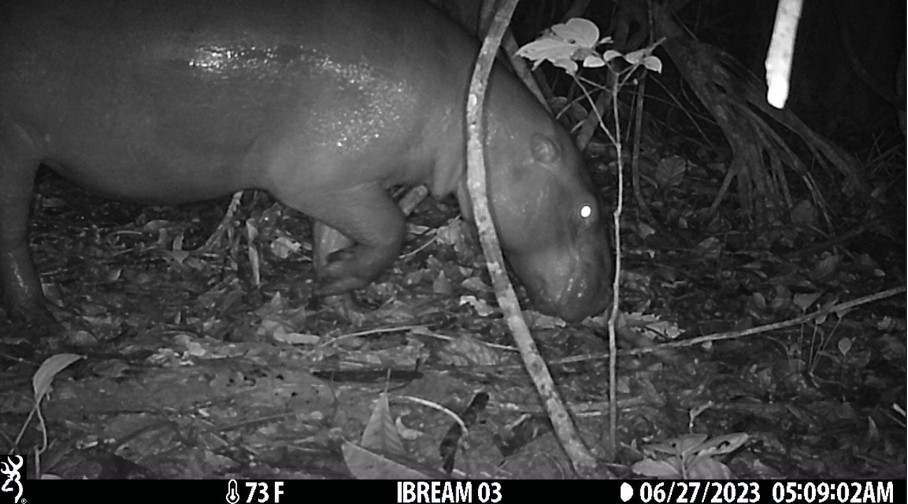
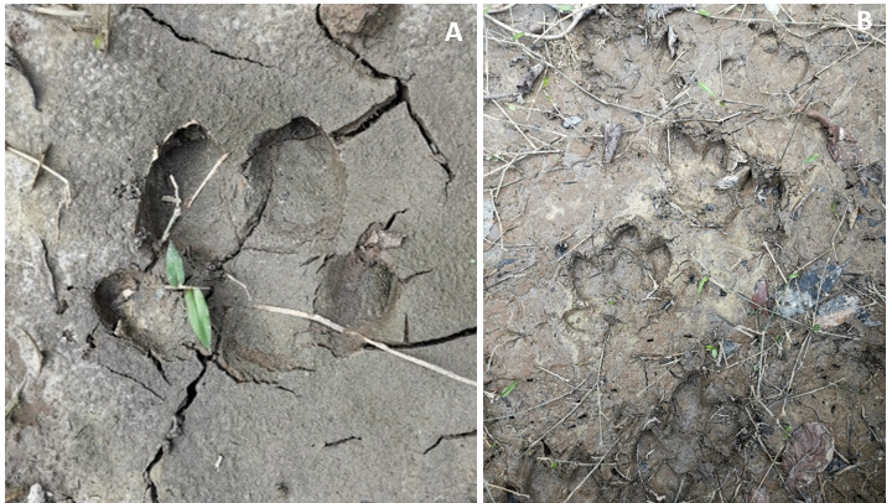
But of course, at the end of every adventure comes an end, and on July 8, 2023, we left Taï National Park. The beautiful rainforest is something I will never forget; you can hardly imagine that there were pygmy hippos and elephants just wandering around! We did not spot many animals because they are afraid of humans, but their presence was felt all around us. Footprints, scat, and countless other animals that we saw on our cameras… I returned home with many new impressions, experiences, and hope for the pygmy hippo. I cannot wait to see how conservation detection dogs, can further contribute to protecting the unique and elusive pygmy hippopotamus. The IBREAM team, together with their local partners at CSRS are now making plans to add conservation dog monitoring as part of the routine biomonitoring by park rangers to find out how many pygmy hippos still live in this unique hotspot. So keep following IBREAM’s work and perhaps we’ll meet again, Ivory Coast!
